
views
Retaining Heat Outdoors
Limit the time you go outdoors. If you’re too cold, avoid going outside unless you absolutely have to. When you do go outside, walk quickly so you don’t have to spend a lot of time in the cold. Stay in the sun while you are outside to naturally stay warm. If you’re playing or working outside and the weather is below freezing, take inside breaks every 15-30 minutes to warm up again.
Move around. When you feel yourself getting cold, pick up your pace and start moving. Your body temperature will rise while you’re active. Limit taking long breaks to avoid cooling down. Stay at a comfortable pace so you don’t sweat, since it could make you colder.
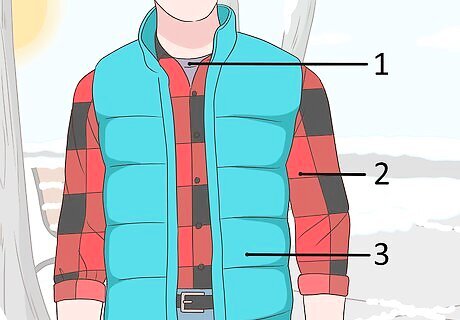
Layer your clothes. Use cotton, wool, or fleece long-sleeved clothing since these materials work the best at maintaining body heat. Find slim-fitting clothes for your underlayer if you don’t want to look bulky. Two or three layers work fine depending on the temperature, but the more layers you wear, the warmer you’ll stay. The air between your layers of clothes holds heat and helps keep you warm. Use a pair of long underwear, or long johns, as your base layer. Many pairs are meant to dry quickly in case you get them wet with snow or slush. Flannel shirts are soft, thick, and stylish to wear while trying to stay warm. Try layering a T-shirt, a flannel shirt, and a down vest. Or, go for an undershirt underneath a wool sweater. You can also wear a shirt, a cashmere cardigan, and a down coat.

Wear a hat to keep in body heat. Find a knit or wool hat that fits over your ears to prevent any body heat from escaping through your head. For extra warmth, wear hats with a fur or synthetic fur lining. Keep hats on when you go outdoors, especially if the temperatures are below 32 °F (0 °C), so you don’t get frostbite. If your scalp is cold, your core temperature will drop faster than it normally would.
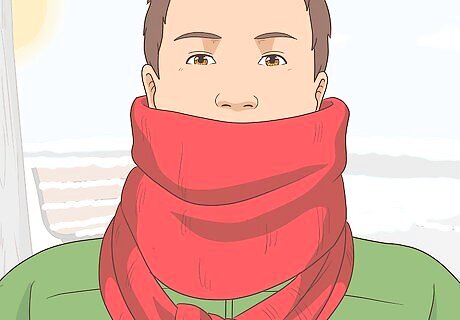
Wrap a scarf around your mouth and neck. Tie your scarf so it doesn’t come undone. Keep your mouth covered since the heat from your breath will help your face stay warm. It'll look a little funny, but wear a ski mask while playing outdoor sports or shoveling since a scarf might get in the way.

Bundle up in a large coat when you go outside. Put on a coat lined with wool or down that’s made for handling cold temperatures. Zip the coat all the way up to keep your core warm. The coat will protect you from the wind and elements whenever you’re outside. Wear a water-resistant coat if it’s wet or you plan on playing or working in the snow. That way, your clothes won’t stay wet while you’re outside.
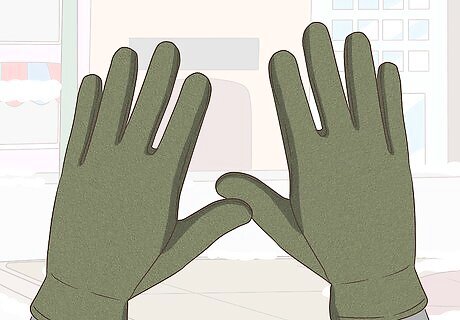
Keep your hands warm with gloves. Wear gloves with a fleece or wool liner to keep your hands warm and to prevent them from drying out. If you plan on being active in the snow, find gloves made of a waterproof material so your hands don’t get wet. If you want to be able to use your phone, make sure you get ones that work with a touchscreen. Mittens will keep your hands warmer, but you’ll have more limited dexterity. If you don’t have gloves, keep your hands in your coat pockets as much as you can.
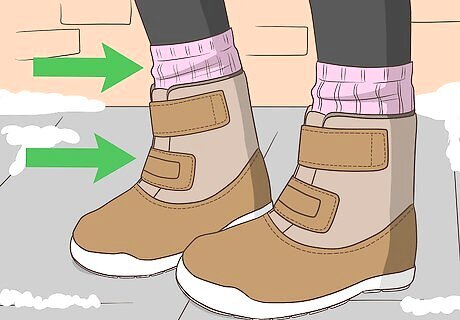
Wear boots and wool socks if you plan on going outside for a long time. Wool socks and insulated boots will help keep your feet warm and prevent them from getting wet from snow or slush. Boots also have thick, non-slip soles so you’re less likely to slip and fall. Leave your boots near a heat source in your home at night to let them dry for the next time you use them. Always bring a backup pair of shoes so you don’t have to wear boots all day. Find socks that are moisture-wicking so they stay drier. If you have wet feet, you’ll get cold.
Staying Warm Indoors

Consume hot food and drinks. There’s a reason why everyone makes soup in the winter, and that’s because it warms your body up. Aim to have at least one hot meal a day that’s high in carbs. Pair your meal with a hot herbal drink or decaf coffee to feel nice and toasty throughout the day. Try making hot cocoa, beef stew, or lentil soup. Caffeinated drinks increase your blood flow, but decrease your body temperature over time. Avoid drinking alcohol since it lowers your body temperature.
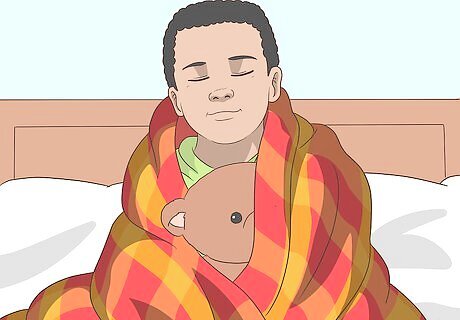
Stay cozy underneath blankets if you want to relax. Find a fleece or wool blanket to lie under when you’re lounging around. Even covering up just a part of your body will help raise your body heat. When you’re sleeping, keep the blanket on top of your sheets to add a bit of extra warmth. Electric blankets can be purchased at most stores and heat up when they’re plugged in. Use an electric blanket if you want extra warmth while you’re cuddling in. Make sure to turn off the electric blanket before you fall asleep to prevent any fire hazards. Blankets get thinner as they age. Consider getting a new blanket if the one you have is over 5 years old. If you only get mildly cold while you sleep, put a blanket on top of your duvet or comforter. If it's especially cold at night, put the blanket between your duvet and your sheets for more insulated warmth.

Keep hand and foot warmers nearby. Hand and foot warmers are single-use packages that generate heat when they’re exposed to air. Break open the outer packaging and shake the interior packet. The packets reach a temperature of about 135 °F (57 °C) for a few hours. Foot warmers fit inside of your shoes and keep your toes warm.

Take a warm bath or shower. Run your bath or shower to the hottest temperature you can handle. Spend 10-30 minutes just relaxing in the water to bring your core temperature up. Not only does a hot bath or shower make you warm, but it also adds moisture to the air to help keep your skin from drying out. Instead of draining your tub right away, let the water evaporate into the air for 1 hour to keep your home humidified. Running constant showers and baths will increase your water bill.
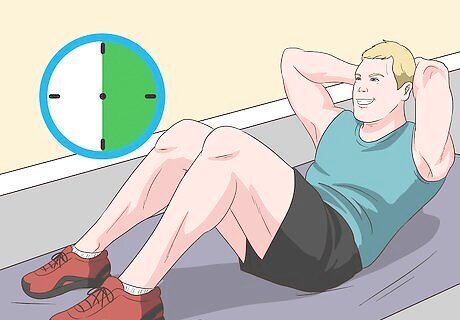
Work out for 20-30 minutes to warm up. Perform your exercises in your home so you don’t have to go outside. Do simple workouts like push-ups, sit-ups, or jumping rope. Working out helps raise your core temperature. Wear long sleeves and pants while you work out so your sweat doesn’t evaporate and cool you down.
Keeping Your Home Warm
Set your home’s thermostat above 68 °F (20 °C). At that temperature, you’ll stay comfortable indoors while saving money. When you go away from your house or go to sleep, turn your thermostat down by 5 °F (−15 °C) to preserve energy.
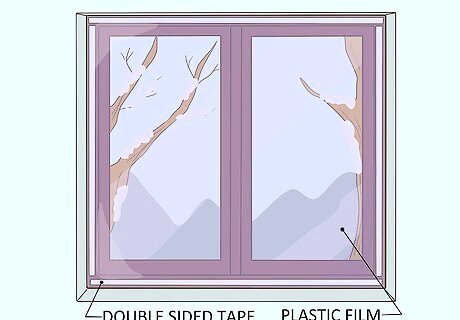
Insulate your windows with a plastic film to prevent cold air from coming in. Stretch a plastic window covering over the all of your windows on the inside. Apply double-sided tape around the edge of your window to attach the plastic insulation. Make sure the plastic is tight and doesn’t have wrinkles. Use a hair dryer on a low-heat setting to seal the plastic. Plastic window covers can be purchased at any home care store. Once the windows are sealed, they cannot be opened unless you remove the film.

Put rugs over tiles or hardwood to keep your feet warm. Use small rugs for tight spaces or area rugs to cover a large floor space. Bare floors can feel a lot colder than room temperature and will make your body cold if you walk around barefoot. If you can’t put rugs down on your floor, wear slippers or socks around the house.

Reverse your ceiling fan’s motor to push warm air down. Turn off your ceiling fan and look at the bottom motor housing. Many fans have a switch on the side that allows you to reverse which way the fan spins. Flip the switch and turn your fan back on. If the blades spin clockwise, it’s pushing the air down. Warm air rises, so reversing your fan will push the air back down to the floor.
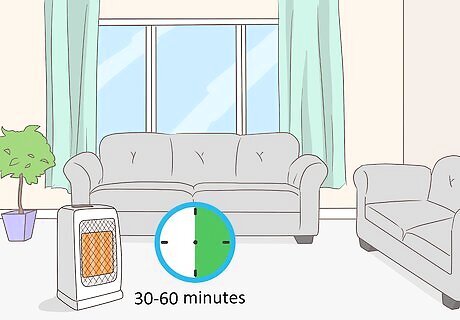
Use a space heater for extra heat in one room. Purchase a small space heater and turn it on in the room you want to warm up. Close off the room as much as possible so the heat doesn’t escape. Let the heater run for 30-60 minutes before turning it off. Once the room starts to cool down again, turn your heater back on. Don’t leave space heaters on for an extended period of time or unattended since they could be a fire hazard. Some heaters have automatic timers to prevent them from being on for too long.
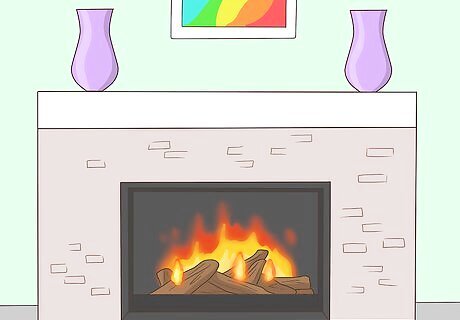
Light a fire in your fireplace if you have one. Either ignite a wood fire or turn on your gas fireplace. The heat from the fire will heat the whole room the longer it burns. Once your room feels comfortable, you can put the fire out. If you don't have a fireplace, find a portable electric fireplace at a home goods store. They help keep you warm and run only on electricity. Keep your chimney’s flue closed when you’re not burning a fire. Heat can escape from your room up through your chimney. Never let a fire burn unattended.




















Comments
0 comment